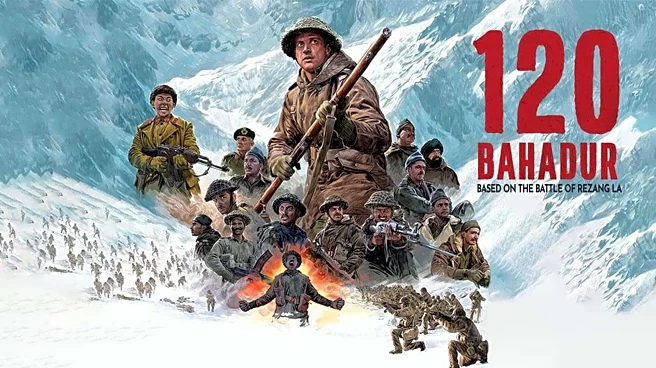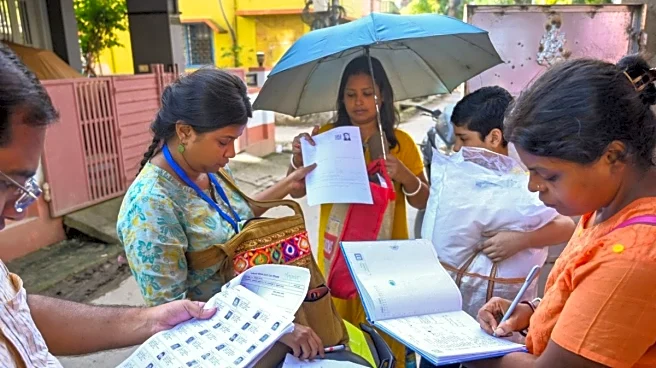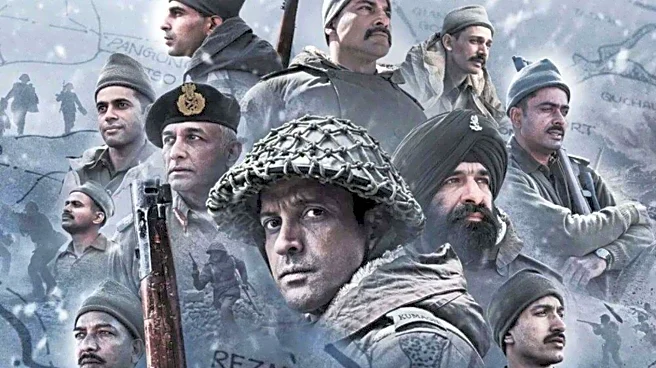Some stories in Indian history sit like quiet sentinels, waiting to be told again with the reverence they deserve. The Battle of Rezang La is one of those tales — stark, wind-bitten, frozen into the unforgiving
landscape of Ladakh, yet burning with courage that can warm generations. When Farhan Akhtar walked onto the screen as Major Shaitan Singh Bhati in 120 Bahadur, he wasn’t just playing another uniformed hero; he was stepping into the boots of a man whose legend was carved at 16,000 feet. And the fact that the film became the first ever to be screened across the country’s defence theatres on 21 November only adds to its significance. But before the cinema lights dim, before the soundtrack swells with patriotic fervour, and before we lose ourselves in the choreography of war, it’s worth pausing. Who exactly was Major Shaitan Singh — the man, the son, the soldier, the leader whose gallantry continues to echo across mountain ridges even today? The answer, as it turns out, is as compelling as the film itself. And so, here is a deep, richly textured dive into the life of the Rezang La hero.
Who Was Major Shaitan Singh Bhati?
Born on 1 December 1924 in Banasar village in Rajasthan’s Jodhpur district, Major Shaitan Singh Bhati was destined for a life stitched with discipline, courage and service. Coming from a Rajput family with a strong martial lineage, he inherited a legacy of bravery long before he ever donned the uniform. His father, Lieutenant Colonel Hem Singh — a decorated officer who served in France during World War I and was awarded the Order of the British Empire (OBE) — was an early influence. With such a mentor at home, young Shaitan Singh understood early that valour wasn’t theatrical; it was a way of life.
Fun Fact: In school, Shaitan Singh wasn’t just a disciplined cadet—he was actually known for his football skills. His agility on the field would later be mirrored in the battlefield where he often sprinted between platoon positions under heavy fire.
Early Life and Education
For someone who would eventually become India’s emblem of military heroism, Shaitan Singh’s childhood was surprisingly relatable. He studied at Chopasni Senior Secondary School in Jodhpur where classmates remembered him as sharp, athletic, and quietly determined. After completing matriculation, he went on to Jaswant College, graduating in 1947. By 1 August 1949, armed with a degree and the kind of discipline only Rajputana upbringing can give, he walked into the Jodhpur State Forces as a young officer. When India integrated princely states into the Union, Singh — much like many of his peers — transitioned into the Indian Army and joined the Kumaon Regiment.
Fun Fact: The Kumaon Regiment’s bond with the Ahir community of Haryana is so deep that even today many of its companies are affectionately referred to as “Ahir Companies.”
The Making of a Military Leader
Between 1949 and 1962, Major Shaitan Singh saw a steady rise in the Army — not because of connections or flamboyance, but because he was consistently dependable. He was promoted to Captain in 1955 and participated in significant operations in the Naga Hills and the 1961 annexation of Goa. He was promoted again, this time to Major, on 11 June 1962 — a mere five months before the moment that would define his place in history forever.
The 1962 War: India’s Himalayan Challenge
The Sino-Indian War of 1962 was a storm long in the making. Border disagreements had simmered for years, and when Prime Minister Jawaharlal Nehru adopted the “Forward Policy” — which involved setting up small posts facing the Chinese — many military commanders were apprehensive. These posts were isolated, scattered, and sometimes nearly impossible to defend. But decisions were made at the very highest levels, and soldiers followed orders. Among them were 120 men of the 13 Kumaon Regiment’s C Company, led by Major Shaitan Singh.
What Was the Battle of Rezang La?
Rezang La is not your typical battlefield. Perched at almost 16,000 feet in the icy vastness of Ladakh, it tests one’s courage even without an enemy in sight. In 1962, it became the stage for one of the greatest last stands in Indian military history. C Company, made up predominantly of Ahir soldiers, found itself staring down thousands of advancing Chinese troops in the dim light of 18 November 1962. The odds? Almost absurd. The courage? Almost legendary. While the Indian soldiers numbered 120, most sources estimate the attacking Chinese forces to be in the thousands.
How Major Shaitan Singh Led His Men
Leadership in war is easy to romanticise, but on the ground, it comes down to brutal choices. Major Shaitan Singh did not lead from behind; he became the heartbeat of every post. As wave after wave of Chinese troops approached, Singh ran between platoons — often in open terrain — coordinating defences, boosting morale, and encouraging his men to hold their ground. This was not the romanticised war leadership of cinema; it was grit forged under sub-zero temperatures. He was eventually wounded in his arms and abdomen, but even then, he refused evacuation. As his soldiers tried to carry him to safety, he insisted they leave him behind so their movement wouldn’t draw enemy fire. They placed him behind a boulder, where he succumbed to his injuries.
Fun Fact: Months later, when the battlefield was recovered, 109 of the 120 soldiers were found still holding their positions, many with weapons in hand as if still guarding the pass. This haunting scene has been recounted by Army historians as one of the most poignant discoveries in military history.
The Heroic Last Stand
The Chinese suffered massive casualties — unofficial accounts suggest over 3,000 — but the cost for India was heartbreaking. Out of 124 Indian soldiers in the Rezang La sector, 114 were martyred. Yet, Rezang La was not a defeat. It was a message. A reminder that bravery can exist even when strategy falters, and that some battles are fought not for territory but for honour. Rezang La remains immortal because of the unyielding stand of 120 men — and the unmatched courage of the officer who led them.
Param Vir Chakra: A Legacy Etched Forever
Major Shaitan Singh was posthumously awarded the Param Vir Chakra, India’s highest military decoration for valour. His citation reads like a script written by destiny — a story of leadership under fire, sacrifice without hesitation, and devotion that transcended the call of duty. Today, statues, memorials, and regimental lore keep his memory alive. In Jodhpur, a statue of the Major stands tall — a reminder that some heroes need no introduction.
Farhan Akhtar as Major Shaitan Singh in 120 Bahadur
Cinema has often attempted to capture war, but rarely does it dive into the emotional marrow of the men behind the uniforms. 120 Bahadur, directed by Razneesh “Razy” Ghai and produced by Ritesh Sidhwani, Farhan Akhtar (Excel Entertainment), and Amit Chandrra (Trigger Happy Studios), seeks to do exactly that. Farhan Akhtar steps into the role with a quiet intensity, portraying not just the battlefield bravery but also the human depth of Major Shaitan Singh. The film also features Raashii Khanna, Sparsh Walia, Vivan Bhatena and Dhanveer Singh — a cast that mirrors the scale of the story itself. That the film became the first to release across India’s defence theatres is itself a salute to the valour of the men who fought at Rezang La.

/images/ppid_a911dc6a-image-176375643089066506.webp)




/images/ppid_a911dc6a-image-176373758061893154.webp)





/images/ppid_59c68470-image-176354253273670213.webp)

/images/ppid_a911dc6a-image-176355407323483385.webp)
